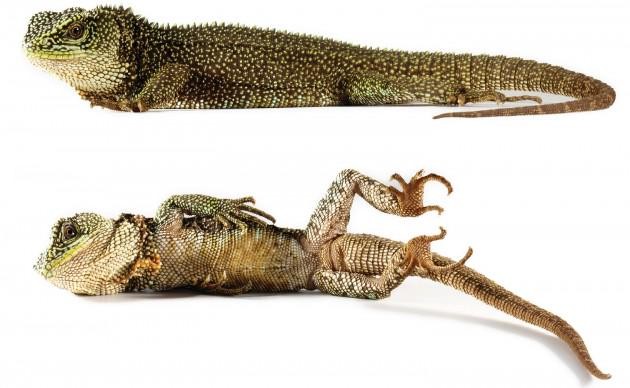With the recent discovery of three new species of dwarf dragon from tropical rain forests of Ecuador and Peru, there has been considerable attention worldwide about what dwarf dragon are in reality.
To begin with, its creatures just inches long that is being dealt with here but have an uncanny resemblance to the dragon like creatures that we have come to know of so far, notably the huge Komodo Dragons of Indonesia.
The three new dwarf dragon species add to the 12 already known to bring the total count to 15. Interestingly, of the 15 known species of woodlizard - as dwarf dragons are also known as - nearly 40 percent have been discovered in the last 7 years alone.
The news of the discovery first appeared on Monday, April 6 in the open access journal ZooKeys thanks to the efforts of Omar Torres - Carvajal of the Museo de Zoología QCAZ, Ecuador; Kevin de Queiroz of the Smithsonian's National Museum of Natural History, and Pablo Venegas, CORBIDI, Peru, reports Smithsonian Science News.
Scientists termed the discovery of three new species of woodlizards are quite unusual given their large size and colourful demeanour. They differed from their nearest relative in the Amazon rain forest on account of their DNA structure, arrangement of scales and coloration.
The three new dwarf dragon species have been named Enyalioides anisolepis, Enyalioides sophiarothschildae and Enyalioides altotambo. Of these, E. altotambo was found in the higher reaches of the forest, at 5,715 feet to be precise in South Ecuador.
Similarly, E. sophiarothschildae - named after Sophia Rothschild who donated to the expeditionary efforts - was found in northern Peru at about 4,921 feet. The woodlizard is characterised by white coloration along under throat region and a greenish-black back.
Lastly, E. anisolepis was found in northern Peru and at an elevation of 2,375 feet.
The dwarf dragons are mostly diurnal meaning they are more active during the day time.
Dragons have come to be associated with folklore all over the world and have more often than not identified with things terrifying and destructive.
As Discovery reported, cultures in India, China and Indonesia have depicted dragon that often spit fire. Groups in Patagonia, the Jivaro of Ecuador's Amazon region and several other cultures too have depicted dragons as mythological creatures.



























